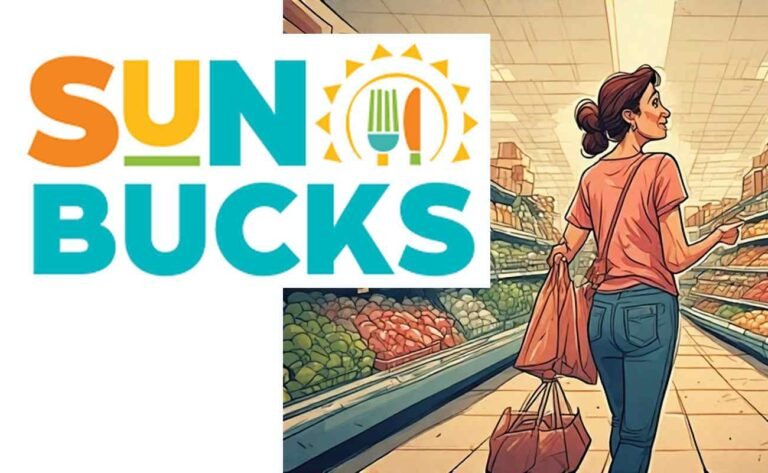Understanding Gross vs. Net Income for SNAP Eligibility in 2025: A Comprehensive Guide
The Supplemental Nutrition Assistance Program (SNAP) helps low-income households purchase nutritious food, but eligibility hinges on understanding gross and net income limits. For 2025, SNAP eligibility requires households to meet specific income thresholds—gross income (total income before deductions) must generally be at or below 130% of the federal poverty line, while net income (after allowable deductions) must be at or below 100% of the poverty line. Households with elderly or disabled members may face different rules, often only needing to meet the net income test. Assets, household size, and deductions like housing or medical expenses also play a role in determining benefits. This guide breaks down these concepts with detailed lists and tables to help you navigate SNAP eligibility in 2025.
As a professional with years of experience in financial assistance programs, I’ve seen how confusing terms like “gross income” and “net income” can be. Whether you’re applying for SNAP for the first time or reassessing your eligibility, this article provides a clear, step-by-step explanation of how income is calculated, what deductions apply, and how to maximize your benefits. You’ll find actionable insights to understand SNAP rules for October 2024 through September 2025.
What Is SNAP and Why Income Matters
SNAP, formerly known as food stamps, is a federal program administered by the U.S. Department of Agriculture (USDA) to support low-income families in buying groceries. Eligibility depends on several factors, but income is the cornerstone. Gross income represents your total earnings before any deductions, while net income reflects what’s left after subtracting allowable expenses like rent or childcare. Understanding these terms is critical because they directly impact whether you qualify and how much assistance you receive. Let’s dive into the specifics with clear, organized lists and tables.
Gross Income vs. Net Income: Key Definitions
To grasp SNAP eligibility, you need to know the difference between gross and net income. Here’s a breakdown:
- Gross Income:
- Total income before any deductions.
- Includes wages, salaries, self-employment income, Social Security, unemployment benefits, and child support.
- Must generally be at or below 130% of the federal poverty line (FPL) for most households.
- Example: A family of three with a gross monthly income of $2,798 or less meets the 2025 threshold for the 48 contiguous states.
- Net Income:
- Gross income minus allowable deductions (e.g., housing, childcare, or medical expenses).
- Must be at or below 100% of the FPL for eligibility.
- Example: A family of three needs a net monthly income of $2,152 or less in 2025.
- Households with elderly (60+) or disabled members only need to meet the net income test in most cases.
Understanding these distinctions is crucial because SNAP evaluates both metrics for most applicants, ensuring benefits align with actual financial need.
2025 SNAP Income Limits: A Detailed Table
The federal government sets income limits annually, adjusted for household size and location. Below is a comprehensive table of SNAP income limits for October 1, 2024, through September 30, 2025, for the 48 contiguous states, Washington, D.C., Guam, and the U.S. Virgin Islands. Note that Alaska and Hawaii have higher limits due to elevated living costs.
| Household Size | Gross Monthly Income (130% FPL) | Net Monthly Income (100% FPL) | Maximum SNAP Benefit |
|---|---|---|---|
| 1 | $1,633 | $1,256 | $292 |
| 2 | $2,215 | $1,704 | $536 |
| 3 | $2,798 | $2,152 | $768 |
| 4 | $3,380 | $2,600 | $973 |
| 5 | $3,963 | $3,048 | $1,155 |
| 6 | $4,545 | $3,496 | $1,386 |
| 7 | $5,128 | $3,944 | $1,532 |
| 8 | $5,710 | $4,392 | $1,751 |
| Each Additional | +$583 | +$448 | +$219 |
Source: USDA SNAP Eligibility Guidelines
Key Notes:
- Households with elderly or disabled members may only need to meet the net income limit.
- States with Broad-Based Categorical Eligibility (BBCE) may have higher gross income limits (e.g., 200% FPL in New York).
- Always check with your state SNAP office for specific rules, as some states waive asset tests.
Allowable Deductions for Calculating Net Income
Deductions are a game-changer in SNAP eligibility, as they reduce your gross income to determine your net income. Here’s a list of allowable deductions for 2025:
- Standard Deduction:
- $204 for households of 1–3 people.
- $213 for 4 people, $225 for 5, and $262 for 6+ people.
- Higher in Alaska, Hawaii, Guam, and the U.S. Virgin Islands.
- Earned Income Deduction:
- 20% of earned income (e.g., wages or self-employment earnings).
- Encourages work by accounting for taxes and work-related costs.
- Dependent Care Deduction:
- Covers childcare or dependent care costs needed for work, education, or training.
- No cap, but expenses must be verified.
- Child Support Deduction:
- Legally obligated child support payments are fully deductible.
- Reduces both gross and net income.
- Medical Expense Deduction:
- For households with members aged 60+ or disabled.
- Deduct out-of-pocket medical expenses exceeding $35 per month.
- Shelter Deduction:
- Includes rent, mortgage, utilities, and property taxes.
- Capped at $712 for most households, but unlimited for households with elderly or disabled members if costs exceed half their income after other deductions.
Example Calculation:
- Gross income: $1,500/month (family of 3).
- Deductions: $204 (standard), $300 (20% earned income), $100 (childcare).
- Net income: $1,500 – $204 – $300 – $100 = $896 (below $2,152, eligible).
For more on how deductions impact benefits, check out our guide on SNAP Income Limits.
Asset Limits for SNAP Eligibility in 2025
Assets, like bank accounts or vehicles, can affect SNAP eligibility, but rules vary by state. Here’s a breakdown:
- Standard Asset Limits:
- $3,000 for households without elderly or disabled members.
- $4,500 for households with elderly (60+) or disabled members.
- Exempt Assets:
- Primary home and lot.
- One vehicle per adult (or income-producing vehicles).
- Retirement accounts in most cases.
- State Variations:
- Quick Tip:
- If your state uses BBCE, you may qualify even with higher income or assets if you receive TANF or SSI benefits.
How SNAP Benefits Are Calculated in 2025
SNAP benefits are based on your net income and household size. The USDA assumes households spend 30% of their net income on food, so benefits cover the difference up to the maximum allotment. Here’s the step-by-step process:
- Determine Gross Income:
- Add all income sources (wages, benefits, etc.).
- Compare to 130% FPL.
- Calculate Net Income:
- Subtract allowable deductions (standard, earned income, etc.).
- Compare to 100% FPL.
- Apply Shelter Deduction:
- Subtract shelter costs exceeding half of net income (capped at $712 unless elderly/disabled).
- Calculate Expected Contribution:
- Multiply net income by 0.3 (30%).
- Determine Benefit:
- Subtract expected contribution from the maximum benefit for your household size.
Example:
- Family of 3, gross income: $1,257, shelter costs: $1,148.
- Deductions: $204 (standard), $251 (20% earned), $54 (childcare) = $748 net income.
- Shelter deduction: $1,148 – ($748/2) = $774, capped at $712.
- Final net income: $748 – $712 = $36.
- Expected contribution: $36 × 0.3 = $11.
- SNAP benefit: $768 (max) – $11 = $757/month.
For more on benefit schedules, visit the Center on Budget and Policy Priorities for detailed insights.
Special Rules for Elderly or Disabled Households
Households with members aged 60 or older or disabled have unique SNAP rules:
- Income Test:
- Only need to meet the net income limit (100% FPL).
- Gross income limit may be higher (e.g., 200% FPL in some states).
- Medical Deduction:
- Deduct out-of-pocket medical expenses over $35/month.
- Example: A senior with $200 in monthly medical costs can deduct $165.
- Shelter Deduction:
- No cap if shelter costs exceed half of net income.
- Certification Period:
- Up to 36 months under the Elderly Simplified Application Project (ESAP) if no earned income.
These rules make SNAP more accessible for vulnerable populations, ensuring they can afford healthy food.
Common SNAP Eligibility Myths Debunked
Misconceptions about SNAP can deter eligible households from applying. Let’s clear up some myths:
- Myth: You need to be unemployed to qualify.
- Fact: Over 75% of SNAP households have earned income. Work doesn’t disqualify you if income meets limits.
- Myth: Assets like your home count against you.
- Fact: Your primary home is exempt, and many states waive asset tests entirely.
- Myth: SNAP benefits are only for families.
- Fact: Single adults, seniors, and disabled individuals can qualify based on income and assets.
- Myth: Benefits are too small to matter.
How to Apply for SNAP in 2025
Applying for SNAP is straightforward but varies by state. Here’s a step-by-step guide:
- Contact Your State SNAP Office:
- Submit an Application:
- Online, in-person, by mail, or fax, depending on state rules.
- Include income, household size, and expense details.
- Attend an Interview:
- Required to verify information.
- May be conducted by phone or in-person.
- Provide Documentation:
- Pay stubs, utility bills, medical expense records, or child support payments.
- Receive Your EBT Card:
- Benefits are loaded monthly onto an Electronic Benefits Transfer (EBT) card.
- Use it like a debit card at authorized retailers.
Pro Tip: If your household has less than $100 in liquid resources and $150 in gross income, or if combined income and resources are less than your rent/mortgage plus utilities, you may qualify for expedited benefits within 7 days.
State-Specific SNAP Rules and Variations
While SNAP is a federal program, states have flexibility in implementation. Here’s a look at key variations:
- Broad-Based Categorical Eligibility (BBCE):
- Adopted by most states, allowing higher income limits (e.g., 165% FPL in Texas, 200% in New York).
- Often eliminates asset tests.
- Certification Periods:
- Most households: 6–12 months.
- Elderly/disabled households: Up to 36 months under ESAP.
- Benefit Adjustments:
To explore state-specific rules, check with your local SNAP office or use an online eligibility calculator like the one at SNAP Screener.
Maximizing Your SNAP Benefits in 2025
To get the most out of SNAP, consider these strategies:
- Report All Deductions:
- Provide proof of rent, utilities, childcare, or medical expenses to lower your net income.
- Update Income Changes:
- Leverage BBCE:
- If your state uses BBCE, you may qualify with higher income or assets.
- Apply for Related Programs:
- Eligibility for TANF or SSI can make you categorically eligible for SNAP, bypassing some tests.
- Use Benefits Wisely:
- Purchase nutritious foods to stretch your budget.
- Check out the Summer EBT Sun Bucks Program for additional support for families with children.
Frequently Asked Questions About SNAP Income Rules
Here are answers to common questions about SNAP income eligibility:
- What counts as income for SNAP?
- All earned (wages, self-employment) and unearned (Social Security, child support) income unless explicitly excluded.
- Do veterans’ benefits affect SNAP eligibility?
- Can I qualify if I own a home?
- Yes, your primary home is not counted as an asset.
- How often are income limits updated?
- Annually, effective October 1. The 2025 limits reflect cost-of-living adjustments.
Conclusion: Navigating SNAP Eligibility with Confidence
Understanding gross vs. net income is the key to unlocking SNAP benefits in 2025. By grasping how income limits, deductions, and assets work, you can determine your eligibility and maximize your benefits. Whether you’re a single adult, a family, or a senior, SNAP offers critical support to put healthy food on the table. Use the tables and lists above to assess your situation, gather necessary documents, and apply through your state’s SNAP office. If you’re unsure about your eligibility, don’t hesitate to reach out for assistance—help is available to ensure you get the benefits you deserve.






